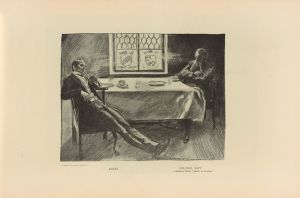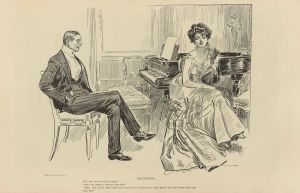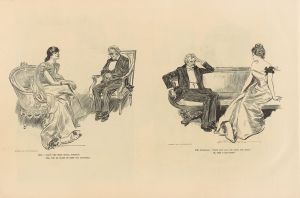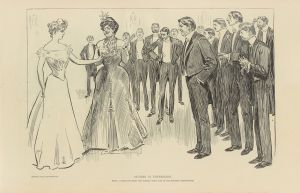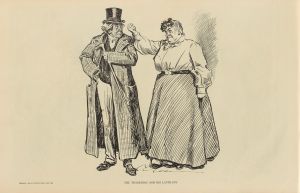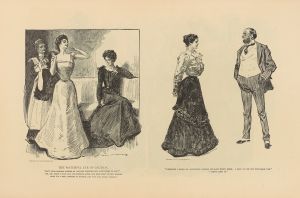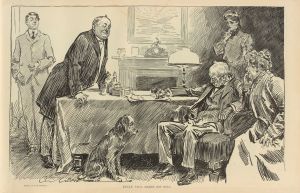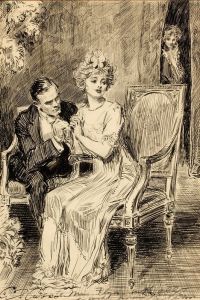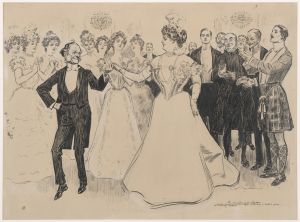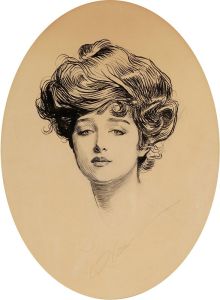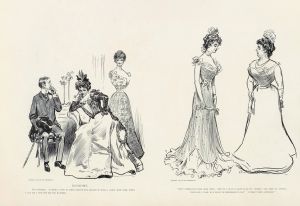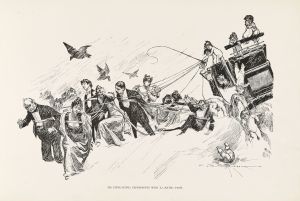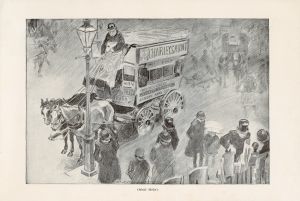
Why she didn’t get the place
A hand-painted replica of Charles Dana Gibson’s masterpiece Why she didn’t get the place, meticulously crafted by professional artists to capture the true essence of the original. Each piece is created with museum-quality canvas and rare mineral pigments, carefully painted by experienced artists with delicate brushstrokes and rich, layered colors to perfectly recreate the texture of the original artwork. Unlike machine-printed reproductions, this hand-painted version brings the painting to life, infused with the artist’s emotions and skill in every stroke. Whether for personal collection or home decoration, it instantly elevates the artistic atmosphere of any space.
Charles Dana Gibson was an American illustrator best known for his creation of the "Gibson Girl," an iconic representation of the independent and fashionable American woman at the turn of the 20th century. One of his notable works is the illustration titled "Why She Didn’t Get the Place."
"Why She Didn’t Get the Place" is a black-and-white illustration that was created by Gibson during the height of his career. The piece is part of a larger body of work that often commented on social issues and the roles of women in society. Gibson's illustrations were widely published in popular magazines of the time, such as Life, Collier's, and Harper's Weekly, making his work highly influential in shaping public perceptions.
The illustration "Why She Didn’t Get the Place" depicts a scene that is both humorous and critical, characteristic of Gibson's style. It shows a young woman, presumably a job applicant, standing in front of a desk where a man, likely an employer, is seated. The man appears to be scrutinizing the woman, while she stands with a confident yet slightly puzzled expression. The title suggests that the woman did not get the job, prompting viewers to consider the reasons behind her rejection.
Gibson's work often highlighted the contradictions and challenges faced by women in the workforce during the early 20th century. At a time when women were beginning to seek more independence and professional opportunities, societal expectations and gender biases still posed significant barriers. Through his illustrations, Gibson was able to subtly critique these social norms while also celebrating the evolving role of women.
The "Gibson Girl" archetype, which Gibson popularized through his illustrations, represented an idealized version of the modern woman—beautiful, educated, and self-assured. However, the "Gibson Girl" was also a product of her time, embodying both the aspirations and limitations placed on women by society. In "Why She Didn’t Get the Place," Gibson captures this tension, using his art to provoke thought and discussion about gender roles and equality.
Charles Dana Gibson's illustrations were not just artistic expressions but also social commentaries. His work, including "Why She Didn’t Get the Place," played a significant role in the cultural landscape of the early 1900s, influencing public opinion and contributing to the dialogue on women's rights and societal expectations. Gibson's legacy as an illustrator and social commentator endures, with his works continuing to be studied and appreciated for their artistic merit and historical significance.
In summary, "Why She Didn’t Get the Place" by Charles Dana Gibson is an illustration that reflects the social dynamics and gender issues of its time. Through his detailed and expressive artwork, Gibson provides insight into the challenges faced by women seeking professional opportunities, making a lasting impact on both art and society.





